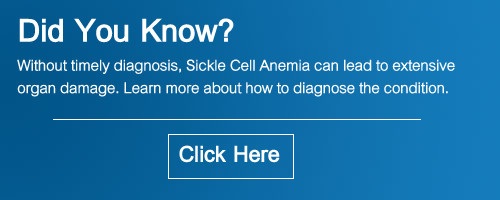Sickle cell anemia symptoms start showing right when a child is 4 to 6 months of age, and these symptoms might vary from mild to severe ones, and also between two individuals.
The organs that are most affected by the sickle shaped red blood cells are the brain, bones, muscles, liver, lungs, kidneys, spleen, eyes, and penis (in the case of males).
Generally, people who are suffering from sickle cell disease are also likely to have a weak immune system, and in turn, are vulnerable to infections from flu viruses, pneumonia, and salmonella.
The Progression Of Sickle Cell Anemia Symptoms
Sickle cell anemia symptoms are progressive from infants to adults.
- In infants, the notable symptoms usually are fever, pain in the chest, abdomen, limbs and joints; swelling in the toes and fingers, lung infections, and bleeding from the nose.
- In children, the most common sickle cell anemia symptoms include a chronic and severe pain in the bones. They also suffer from anemia, irritability, and jaundice.
- In adults, sickle cell anemia symptoms again include a chronic and severe pain in the bones and joints, and other problems like anemia, gum disease, vision problems, and delayed puberty.
The sickle cell crises occur when the red blood cells block the small blood vessels in the body, causing acute pain. The intensity of the pain might vary between individuals. Some individuals suffer from just a few episodes of crises, whereas others might suffer from more such episodes in a year.

Sickle cell anemia complications don’t necessarily have a particular cause behind them, however they can be triggered by various conditions such as fever, any infection caused by microorganisms, dehydration, hypoxia, any physical injury that causes bleeding, cold exposure, drug or alcohol abuse, pregnancy, or stress.
Sickle Cell Anemia Symptoms – The Types Of Crises People Face
There are different kinds of crises, and these are classified on the basis of the body part that has been affected.
Acute Chest Syndrome Crisis
This type of crisis is more common in young individuals. People who suffer from this condition often experience severe pain in the chest, while coughing up blood. They are also likely to face low fever and shortness of breath. If this condition is not treated immediately, it could lead to the individual’s death.
Splenic Crisis
During circulation, the sickle shaped red blood cells get trapped in the spleen, preventing them from flowing out of the spleen. This results in the enlargement of the spleen, and the blood count also drops, resulting in anemia in the individuals suffering from sickle cell disease.
Such individuals require repeated blood transfusion until the body recovers and is able to make new red blood cells.
Bone Crisis
The bones in the arms and legs, including the femur, humerus, and tibia, are likely to develop sudden and severe pain, resulting in a bone crisis. This is usually caused due to inadequate blood supply.
In young children, the bones in the toes and fingers usually enlarge, resulting in intense pain. This condition is termed dactylitis.
Joint Crisis
Under this condition, the main bone joints might together develop pain simultaneously or a sole bone joint might develop pain. This, again, is because of the inadequate supply of blood to these regions.
Abdominal Crisis
Severe abdominal pain that rises without any particular association to an abdominal condition is often due to abdominal crisis, mainly in patients who suffer from sickle cell disease. The acute pain can also trigger other conditions in such individuals, especially issues like diarrhea, nausea or vomiting.
You should immediately consult a physician if you note such sickle cell disease symptoms personally or around you. Only when the condition is effectively diagnosed can further steps for sickle cell anemia treatment be taken.
